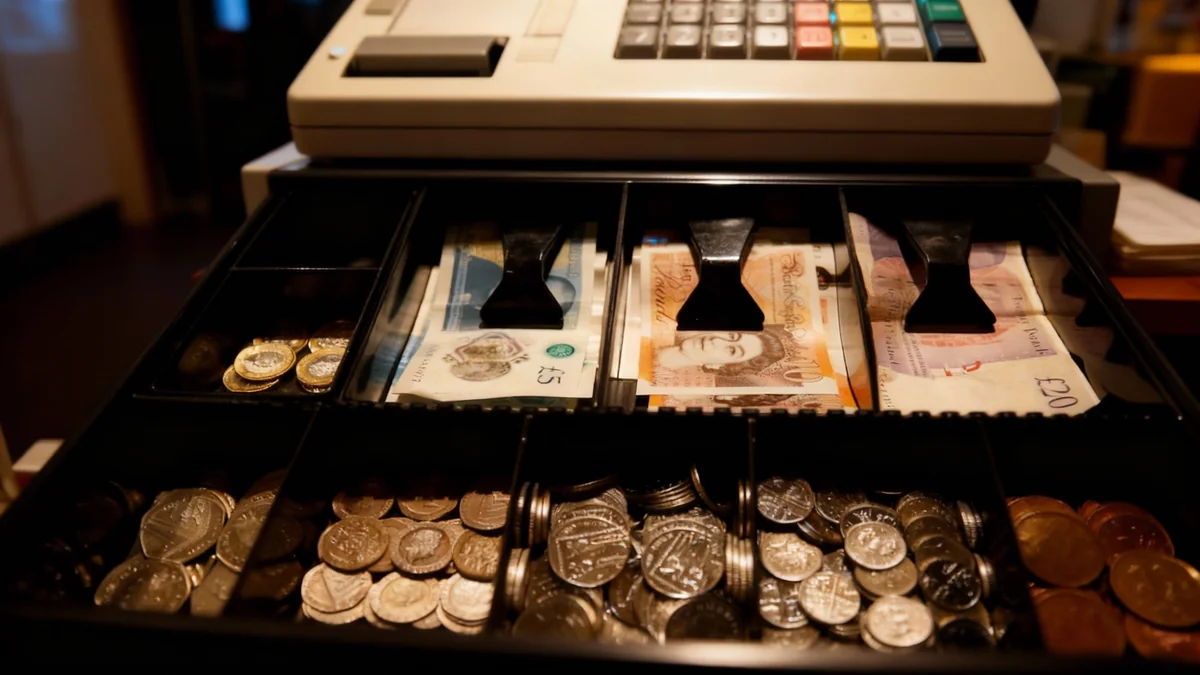The British pound is facing downward pressure against the U.S. dollar and the euro as financial markets brace for a pivotal interest rate decision from the Bank of England (BoE) this Thursday. Traders are navigating significant uncertainty, with market odds suggesting a potential, though not guaranteed, rate cut that could introduce notable volatility to the currency.
On Monday, sterling weakened against the dollar, trading just above a recent six-month low. Its position against the euro also remained fragile, hovering near a two-year low, reflecting broad-based caution among investors ahead of the central bank's announcement.
Key Takeaways
- The British pound is trading near a six-month low against the U.S. dollar and a two-year low against the euro.
- The Bank of England's interest rate decision this Thursday is the primary focus for currency traders.
- Market pricing indicates a one-in-three probability of a 25-basis-point rate cut this week.
- Recent economic data, including a weaker-than-expected inflation report, has fueled speculation of monetary easing.
Sterling's Precarious Position
The pound's performance at the start of the week highlights the market's nervous sentiment. The currency fell 0.27% against the U.S. dollar to trade at $1.3132. This level is uncomfortably close to the more than six-month low of $1.30965 recorded last week.
Against the common European currency, sterling was relatively stable at 87.70 pence per euro. However, this offers little comfort as it remains near the 88.17 pence level seen last week, which marked the pound's weakest point in over two years.
By the Numbers
- GBP/USD: Trading at $1.3132, down 0.27%.
- EUR/GBP: Steady at 87.70 pence.
- Rate Cut Odds (Nov): Approximately 33% chance of a 0.25% cut.
- Rate Cut Odds (Nov/Dec): Roughly 66% chance of a cut by year-end.
Positive domestic data did little to support the currency. A report on Monday indicated that British factories experienced their strongest month in a year during October. However, the market largely dismissed this news, attributing the strength to one-off factors rather than a fundamental improvement in the economic outlook.
Focus Shifts to Bank of England's Verdict
The primary driver for the pound this week is unequivocally the Bank of England's monetary policy meeting. Unlike recent meetings from other major central banks, such as the European Central Bank, the outcome of the BoE's decision is far from certain.
Market pricing has shifted dramatically in recent weeks. The probability of a 25-basis-point interest rate cut, which was once near zero, has surged. Currently, investors see a one-in-three chance of a cut being announced on Thursday.
This change in sentiment was largely triggered by a series of economic data releases last month, most notably an inflation reading that came in cooler than analysts had anticipated. When combining the possibilities for this week and the next meeting in December, the market is pricing in a roughly two-in-three chance of a rate cut before the end of the year.
The Inflation Factor
Central banks often cut interest rates to stimulate the economy when inflation is low and economic growth is weak. A recent lower-than-expected inflation print in the UK has given the Bank of England more room to consider such a move, leading to the increased speculation that is currently weighing on the pound.
Analysts Predict Volatility
The high degree of uncertainty surrounding the BoE's decision means the pound is likely to experience a significant price swing on Thursday, regardless of the outcome.
Lee Hardman, a senior currency analyst at MUFG, suggested that a decision to cut rates this week would not be a complete shock, although his firm's base case remains a cut in December. He noted that waiting would allow the central bank to gather more economic data and consider the government's upcoming budget.
"Our base case is still a cut in December - I don't think one softer CPI print is enough and by December they'll have more information and have the budget," Hardman stated.
He also commented on the potential market reaction if the Bank of England decides to hold rates steady for now. An initial rally in the pound is possible, but it may not be sustainable.
"If they do stay on hold, we might get an initial rally in the pound, but I think it will peter out as people start thinking about December," Hardman explained. This suggests that even a decision to hold could be interpreted as merely delaying the inevitable, keeping long-term pressure on sterling.
Investors will also be looking ahead to late November, when finance minister Rachel Reeves is scheduled to announce her budget. This fiscal plan will provide further clarity on the government's economic strategy and could influence the Bank of England's future policy decisions.





